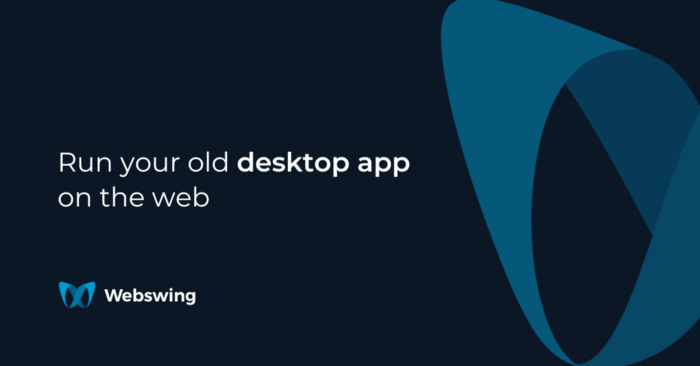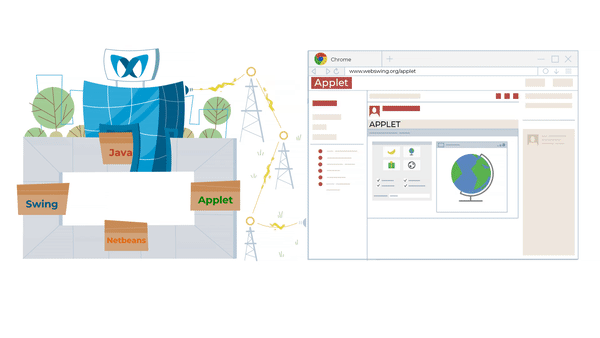Webswing is basically a middleware, that allows users to run their old desktop apps on the web.
How does it work? What is it compatible with? Who is it suitable for? What are the pros and cons of Webswing? Read bellow.
The Future of Swing
Webswing is a simple solution for existing Swing based applications and Applets. It's an easy way to deploy any Swing application in cloud, as SaaS (Software as a Service) or to support an Applet in all modern browsers.
Some say Swing is old-fashioned and that JavaFX is there to kill it off. But then there’s stuff like Webswing that could make Swing persist way past its supposed due date. (source: reddit, Kofler David)
Users who are just starting to develop a new application might want to consider other web frameworks, however it is useful to use Webswing if a web application needs to use a swing-based component.

Webswing is a great option for users, who would like to migrate their desktop application to web, but don't have the possibilities to hire a complete team of developers who would work on rewriting the application or for those, who need more time to prepare their company for a months-long development of a new application.
How Does It Work?

Swing API is by design cross-platform, which means all interactions with platform dependent features happen through a well defined minimal interface (java.awt.Toolkit). Java ships with platform specific implementations for Windows, X11 and Mac.
Webswing defines a new platform implementation for “Web”, which simply turns web browser to a virtual desktop and translates platform specific actions to browser actions in the best possible way.
No Source Code Changes!
The main advantages of running a desktop application in Webswing are: easy and fast distribution of new application version and of course, no need to rewrite the code.
We were able to use Webswing and offer our application in it’s entirety as a cloud solution without changing a single line of code! The product is amazing. We don’t know where we’d be without it. (Joseph Lee, CEO, Volanté Systems)
Webswing is compatible with Swing Applications, Java Applets, Netbeans Platfrom Applications and JavaFx Applications with no need of code modification or conversion. The whole setup and integration process usually takes only 15 minutes.
A Browser Is All You Need
Webswing runs the application securely on a server while a user’s browser only displays the application window. All that is needed for Webswing to work is any of modern browsers that implements the HTML5 standard. No additional browser plugins are required.
Release Cycle
The Webswing release cycle follows Oracle's development cycle which means there is a major release in Webswing every 6 months. Java LTS support will be after Oracle's release delayed by one cycle, while Webswing still supports two latest LTS versions of Java.
The latest version of Webswing — 2.6.3 includes support for Java 11 and JavaFx 11.
Production & Setup Support
The Webswing team offers pre-production support to ensure that the users get the best results from using Webswing. The team advises, helps with process planning and finally with the integration so it all takes the least amount of time.
Webswing provides us with a powerful and reliable way to SaaS-enable our decision table tool LF-ET. The fast and very professional support additionally improves the efficiency of the entire project. (Harald Lohrfink, CEO, LOHRFINK software engineering)
Demand for applications to be accessible online is still rising, as it is in many cases the most effective and the fastest way to coordinate processes. Webswing is available for free as an immediate solution for an existing applications without any risks, that would most likely show up while rebuilding the application from zero.
Find out more about Webswing at webswing.org and do not hesitate to ask any questions or share your experience with us.



